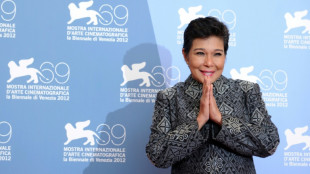

Oscar short docs race showcases booming art form
When marine biologist Maxim Chakilev flings open the door of his ramshackle Siberian hut in the Oscar-nominated short documentary "Haulout" to find 100,000 honking and heaving walruses, the effect is breathtakingly cinematic.
For almost two minutes, the screen is crowded with jostling animals, their guttural snorts filling the soundtrack and putting the viewer right in the middle of an astonishing natural spectacle.
The scene, the centerpiece of a 25-minute film on how climate change affects the natural world, illustrates how short documentaries have exploded as an art form -- and why big guns like The New Yorker and Netflix are getting involved.
"Video is a very powerful medium, and right now, this is how many people get their information about the world," Soo-Jeong Kang, executive director of programming and development at The New Yorker, told AFP.
"Traditional media companies are increasingly recognizing this as both a way to reach new audiences and as a profound storytelling platform."
The almost language-free "Haulout," produced by brother-sister team Maxim Arbugaev and Evgenia Arbugaeva, who spent three months living in Chakilev's rudimentary hut, is exactly the kind of top-notch content that dovetails with The New Yorker's high-brow fiction and deep-dive reporting, Kang said.
"It's a pure cinematic experience, where you don't need a spoken word to know what that story is about... an extension of that intersection between art and great journalism."
- Range -
"Haulout" is competing for the Academy Award for best documentary short film against four other nominees, and the range of those contenders demonstrates the breadth of a format audiences are increasingly embracing.
New Yorker stablemate "Stranger at the Gate" tells the story of a US military veteran whose tours have left him scarred by hate, but whose warm welcome at the mosque he had planned to blow up reconnects him to his humanity. Nobel peace laureate Malala Yousafzai is the short's executive producer.
"How Do You Measure a Year?" splices together interviews that filmmaker Jay Rosenblatt conducted every year with his daughter between the ages of two and 18.
Netflix's "The Elephant Whisperers" is a joyous exploration of the love an Indian couple share for the baby animals in their charge.
The streamer's second nominee in the category is "The Martha Mitchell Effect," a curation of archival footage about a woman on the fringes of the Watergate scandal.
The Netflix contenders are just two of the scores of documentaries available on its platform -- some of which regularly feature as its most watched offerings.
- Democratization -
Documentaries were dominated in past decades by the likes of Britain's publically funded BBC, or America's PBS -- both organizations that lean towards didacticism. But in recent years, the sector has shown its entertainment chops.
Netflix's "Making a Murderer" and HBO's "The Jinx" -- real-life crime thrillers from 2015 -- were instrumental in popularizing the format for the streaming age.
And such fast-paced, watchable fare continues to come thick and fast -- well before a jury found a South Carolina lawyer guilty of killing his wife and son last week, Netflix said "Murdaugh Murders: A Southern Scandal" was one of its most popular programs.
But even the less-obviously digestible offerings are doing well, as important subject matter -- particularly around climate change and identity -- resonates with viewers.
The New Yorker says it gets nearly 11 million monthly video views across its YouTube channel and newyorker.com, with documentaries at the top of the list, both in terms of total views and average number of views per video.
Those burgeoning audiences are increasingly seeing themselves reflected in the kind of documentaries that are getting made, as improving technology lowers the barriers to entry and allows almost anyone to become a filmmaker.
"In recent years because of the accessibility and affordability of editing software and high-quality cameras... anyone who dreams of making a documentary now (has) reasonable access to the tools," says Kang.
"It's a democratization of this field that allows people from all walks of life to make a story about their experiences."
For filmmakers like Arbugaeva, whose stunning cinematography elevates "Haulout," this democratization is key to the authenticity and intent required of a good documentary.
"When local storytellers tell stories of their environment, it's something that is so personal," she told AFP.
"You're talking about your own heart and the heart of your community that is breaking."
T.Cortez--RTC



